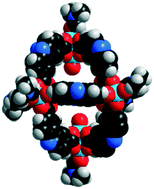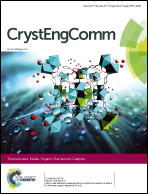Synthesis of vanillin via a catalytically active Cu(ii)-metal organic polyhedron†
Abstract
Crystalline Cu(II)-MOP 1 was employed for the first time in the catalytic conversion of trans-ferulic acid to vanillin. The generation of uncoordinated Cu(II) metal sites within MOP 1 by activation as well as sonication, revealed its catalytic potential that afforded a reaction yield of 60%. Complementary cyclic voltammetry experiments (CVs) demonstrated the formation of the complex Cu–H2O2, which supported the reaction mechanism proposed here.

- This article is part of the themed collection: Metal-Organic Framework Catalysis


 Please wait while we load your content...
Please wait while we load your content...